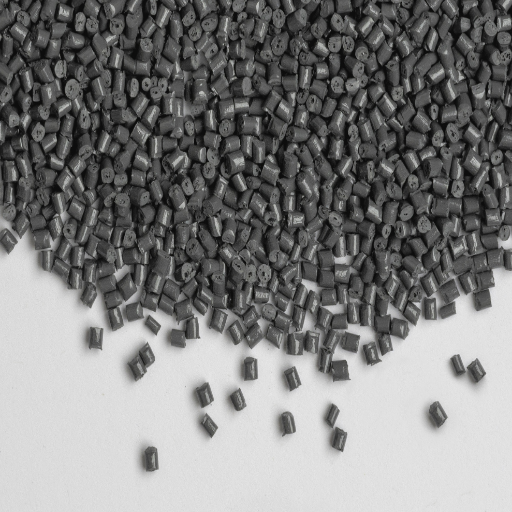Delrin, a versatile engineering thermoplastic, has seen a surge in strength, durability, and versatility across various industries. Known for its high-performance capabilities and distinct characteristics, it is best suited for instances where precision and strength are required. So, what is Delrin, and why has it become so widely used in various industries? We will explore the fundamental properties on which Delrin is based, its industrial applications in general, and why it remains an indispensable material in the real-world solutions to advanced manufacturing problems. Whether you are a highly skilled engineer, product designer, or one living on the precipice of modern engineering innovations, I hope this guide will clear up the haze surrounding Delrin.
Introduction to Delrin and Acetal
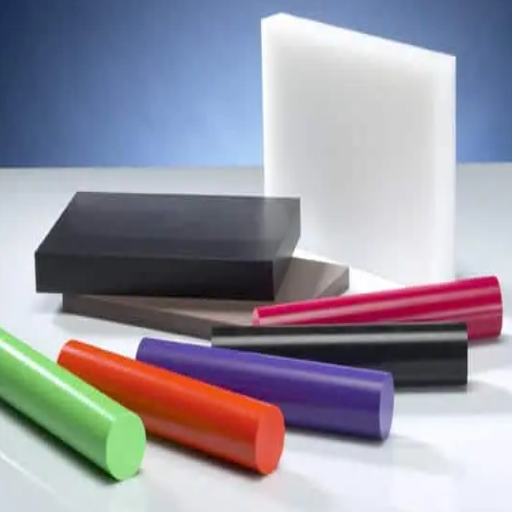
What is Delrin Plastic?
Delrin presents itself as a very high-grade engineering plastic and is technically classified as an acetal homopolymer. Manufactured by DuPont, Delrin is renowned for its exceptional strength and stiffness, while also resisting wear and fatigue. This versatile material affords low friction and remarkable dimensional stability, factors that combine with industry requirements in automotive, aerospace, consumer electronics, and industrial machinery.
Arguably, Delrin’s features, combined with its extreme heat resistance, are of primary intent in consideration. It barely melts, and when it does, it does so at around 347°F (175°C). Upon exposure to humidity, chemicals, and ultraviolet rays, it will remain standing even after many years. A good mechanical property, coupled with surface cleanliness, favors high precision and efficiency during the fabrication of components such as gears, bearings, and housings.
Delrin tends to have a tensile strength ranging from 9,000 to 11,000 psi and a moisture absorption of less than 0.5%, providing reliability in high-precision applications. Besides, machining is so easy that it also becomes the correct choice when mass production of customized parts is required. The balance between performance and cost makes Delrin a primary material for solving complex design and engineering problems.
General Overview of Acetal and Polyoxymethylene
Acetal, commonly trademarked as Delrin among others, is a thermoplastic polymer famed for its exceptional mechanical properties and dimensional stability. A type of acetal resins, polyoxymethylene (POM) has similar attributes and is used in industrial and engineering applications where high demand is placed. POM is highly resistant to wear, fatigue, and creep, making it suitable for parts that undergo repeated motion or long-term stress. Because POM has very low friction, parts made from it perform well as sliding or rotating components, such as gears, bearings, and conveyor belts.
Acetal polymers also exhibit exceptional chemical resistance, remaining stable upon exposure to solvents, oils, and fuels. Complementing this chemical resistance is a wide temperature range in which they can be used; they have applications in both high-heat and sub-zero environments. POM is available in both homopolymer and copolymer grades, each offering distinct benefits. Typically, homopolymer grades exhibit better mechanical strength and surface hardness, while copolymer grades provide improved thermal stability and resistance to hydrolysis.
Improvements in acetal processing and formulation have enabled its entry into the automotive, consumer electronics, and healthcare industries. For example, acetal components can be found in fuel-system parts, precision-instrument housings, and medical delivery devices, where the utmost reliability and precision are required. In an ever-evolving modern manufacturing landscape, the very nature of these polymers exemplifies their indispensability due to their versatility, cost efficiency, and high performance.
Differences Between Delrin and Other Plastics
As a high-performance acetal homopolymer, Delrin surpasses other plastics in terms of mechanical properties, wear resistance, and machinability. Delrin has better tensile strength and stiffness; therefore, it finds application in high-precision applications that require dimensional stability, unlike ordinary plastics like polyethylene or polypropylene. In instances where polyethylene undergoes deformation under heavy loads resulting from mechanical stress, Delrin maintains its shape, volume, and integrity, and can therefore be used in applications such as gears, bearings, or structural parts.
While Acrylonitrile Butadiene Styrene (ABS) is generally used in lightweight and general-purpose molding applications, Delrin is able to resist wear, fatigue, and creep in demanding environmental conditions, such as fluctuating temperatures or high moisture exposure. Another important point about Delrin is its low friction coefficient, making it ideal for applications that require smooth and low-wear operations, such as sliding mechanisms or mechanical components under continuous motion.
While nylon (polyamide jargon) is commonly appreciated for its strength and resilience, Delrin excels in moisture resistance and dimensional stability properties, which are crucial in high-humidity and water-exposed environments. The significant disadvantage of nylon is that it tends to absorb water over time, thereby expanding and potentially losing its strength. As Delrin does not have this issue, it is widely preferred for marine or fluid handling system purposes.
Additionally, Delrin compromises on transparency for improved chemical and thermal stability compared to polycarbonate, which is favored primarily for its impact resistance and transparency. The resistance it offers to a broad range of solvents, fuels, and lubricants further extends its applications in sectors like automotive and aerospace.
Essentially, the produce-to-resistance of Delrin in high-wear, low-moisturizing alternatives sets it apart with certain unique features, which distinguish it from many other plastics, thereby enhancing its applications within various domains and placing it on a higher value level in engineering and industrial manufacturing.
Material Properties of Delrin
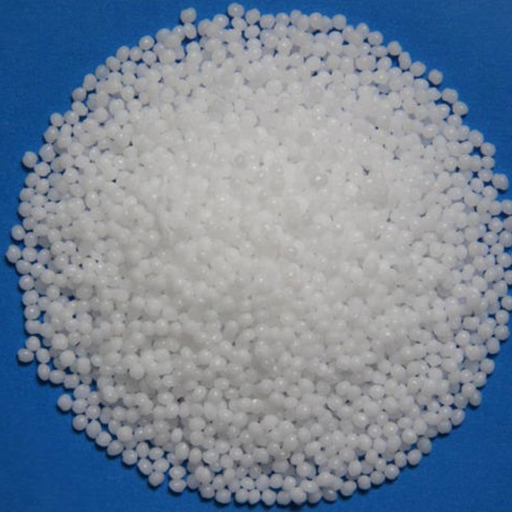
Physical Properties of Delrin
Delrin, as would be expected of a high-performance acetal resin, exhibits the physical properties that make it the engineer’s preferred material for various uses: a relatively low density of about 1.41 g/cm³, which makes it lighter while also supporting it, allowing for easier handling. The other general mechanical property it possesses includes tensile strength, which ranges from 69 MPa. Under such stresses, it should hold.
Likewise, it offers higher impact resistance, allowing it to withstand harsh working conditions or violent treatment in demanding environments. With its low coefficient of friction, it is suitable for applications that occasionally permit sliding between two pieces, such as gears, bearings, and conveyor equipment.
The next great property entails Delrin maintaining rigidity while maintaining toughness across the broad temperature range, generally from -40°F to 180°F (-40°C to 82°C). With a relatively low thermal expansion rate, there is a lower likelihood of deformation under elevated temperatures. All these effects combine to make Delrin extraordinarily suitable for manufacturing precision components in industries that require both toughness and reliability.
Mechanical Properties and Performance
A unique combination of mechanical properties has characterized Delrin and, therefore, makes it an attractive polymer for engineering applications. It has an extraordinary tensile strength, which means it can resist the application of weighty loads without yielding. Its resistance to impact is relatively high, making it useful in applications where sudden blows or harsh conditions are frequent.
Being a polymer with a relatively low friction coefficient, it imparts enhanced life to components under mechanical movement, such as gears, cams, and bushings. Delrin exhibits superior fatigue resistance, as it can withstand cyclic stresses without undergoing marked deformation or cracking, a crucial attribute in applications involving prolonged cyclic loading. Its dimensional stability enables it to resist creep and deformation under protracted stress, ensuring uniform performance. Delrin is also highly machinable, allowing for the accurate machining of parts with complex shapes and the good fitting of components. Altogether, its mechanical properties make it suitable for a variety of industrial and commercial applications.
Comparison of Delrin and Metals
Fundamental differences are discussed concerning the weight, corrosion resistance, machinability, and performance in specific applications while comparing Delrin (polyoxymethylene or POM) with metals. Delrin is, on average, 80 percent lighter than conventional metals such as aluminum and steel, and is therefore an excellent choice whenever weight reduction is required, e.g., in automotive and aerospace components. This weight advantage increases energy efficiency in systems where performance is weighed against reduced mass.
A second significant factor, in terms of corrosion resistance, is Delrin. Metals can rust or degrade under the action of moisture or certain chemicals, whereas Delrin is resistant to water and a great majority of chemicals, ensuring long-term durability without any surface treatment or coating. It is thus best suited to an environment where exposure to harsh conditions is a daily occurrence, such as in marine materials or industrial equipment.
Machinability is yet another feature in which Delrin excels. Its excellent dimensional stability and low friction characteristics allow smoother machining operations on it than on metals, thereby minimizing tool wear and permitting precise tolerance. This characteristic becomes particularly important when producing fine, complex components, such as gears, bearings, and connectors. Furthermore, while metals such as steel tend to become brittle at very low temperatures, Delrin maintains its mechanical integrity over a wide range of temperatures.
Should one desire, however, metals often perform better when higher strength or impact resistance is needed; steel and titanium provide unmatched tensile strength and resistance to bearing loads to extreme levels as structural applications demand, whereas Delrin, firm as it is for a plastic, could hardly stand the test of severe mechanical stresses or impacts.
In comparison to metals, Delrin is cheaper since it generally requires the least machining, post-processing, and logistics due to its lightweight nature. When lifecycle costs are considered, it’s likely that corrosion- and wear-resistant properties will ultimately reduce both maintenance and replacement costs compared to metal.
Then, depending primarily upon weight restrictions, external conditions, mechanical property demands, and cost, the decision as to whether Delrin or metals are selected would finally be made. Wherever the industry demands mechanical performance, corrosion resistance, and weight considerations, Delrin would make a compelling proposal for consideration over metal materials.
Applications of Delrin in Industry
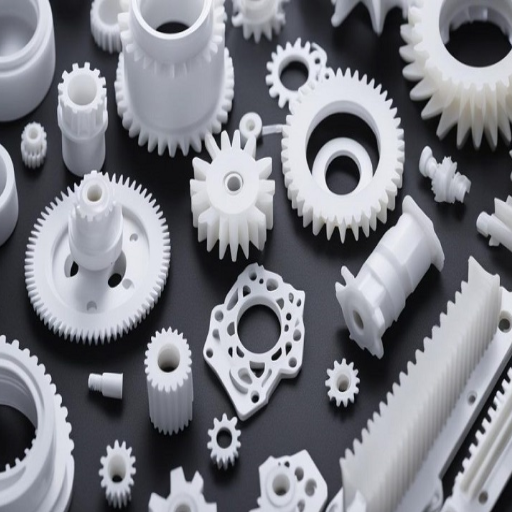
Use of Delrin in Automotive Components
Delrin has found numerous applications in the automotive and industrial fields due to its excellent balance of strength, durability, and lightweight characteristics. Much of the use of this polymer in the automotive sector is in the manufacturing of precision parts, including gears, bushings, and fuel system components. Due to its low coefficient of friction and high wear resistance, Delrin becomes the ideal material for parts that undergo repetitive motion or mechanical stress.
Delrin has a very low coefficient of moisture absorption, and its chemical and fuel resistance ensure it works long-term, even in harsh automotive environments. Fuel lines and pump parts made from Delrin, for instance, can withstand prolonged exposure to gasoline, diesel, and other corrosive substances without any adverse effects. The processability and excellent moldability of Delrin enable manufacturers to produce complex and high-precision parts with ease, significantly reducing production costs.
The new modes of automotive design emphasize weight reduction for improved fuel efficiency and stricter emissions standards. Delrin became a significant player in these aspects by providing an alternative to metal parts, which were heavier but hindered function and durability. Studies have shown that the weight of components can be reduced by approximately 50% by replacing conventional metals in certain parts with Delrin. Even a slight reduction in component weight yields significant fuel savings and environmental benefits on a large scale.
Some of the most critical applications of Delrin include belt tensioners, door lock systems, steering column components, and seating mechanisms. The applications of these kinds derive benefit from the mechanical properties of the material and from their ability to work at elevated or reduced temperatures, which are the most common conditions in an automotive environment.
Delrin in Plastic Injection Molding
Among plastic injection molding materials, Delrin is strategically placed due to its excellent mechanical properties and processability. The high-performance acetal resin presents excellent dimensional stability, making it a preferred choice for manufacturing intricate and precise components. Its low friction coefficient and high wear resistance enable the production of parts able to resist heavy use without noticeable levels of degradation.
Another advantage of Delrin injection molding lies in its excellent flow. This particular trait allows molders to work fine details into intricate geometries, thereby minimizing instances of surface defects such as sink marks or warping. Delrin also excels at short cycle times, as it cools and solidifies much faster during the molding process. This results in significant cost savings for producers working on high-volume production without compromising on quality.
Injection molding is often used to manufacture Delrin parts, which are utilized in the automotive, consumer goods, and electronic industries. Gears, bearings, clips, and connectors are manufactured from it, all instances where long-term reliability and mechanical stress performance under the course of general use are of utmost importance. The chemical resistance that Delrin offers makes it versatile, as it allows the material to withstand exposure to fuels, solvents, and a range of industrial agents, making it suitable for harsh environments.
High-Performance Applications of Delrin
Thanks to its exceptional mechanical properties, Delrin finds use in various high-performance applications across multiple industries. This includes fuel system components and safety restraint systems under the hood in the automotive sector. Such components must possess precision and resilience to function under extreme temperatures. The same mechanical properties of Delrin, i.e., low coefficient of friction and excellent wear resistance, allow gears and bushings to operate more efficiently and remain in service longer.
Delrin also finds application in the medical field. Its biocompatibility and ability to withstand repeated sterilizations make the material an excellent choice for producing components of medical devices such as insulin pens, inhalers, and surgical instruments. The need for these applications ensures dimensional stability and reliability, ensuring performance consistency under stringent standards.
The aerospace industry similarly benefits from a strong yet lightweight material like Delrin, which resists impact to form lightweight, yet strong, components such as clamps, brackets, and housings. The promise of performing well even in harsh environments opens more specific areas for Delrin acceptance in military equipment and industrial machinery, where long-term reliability is crucial.
Flexible and reliable, Delrin performs at full throttle as the number one material for applications requiring precision engineering, high strength, and consistent durability, and has found relevance in ever-changing technological and industrial fields.
Advantages and Disadvantages of Delrin
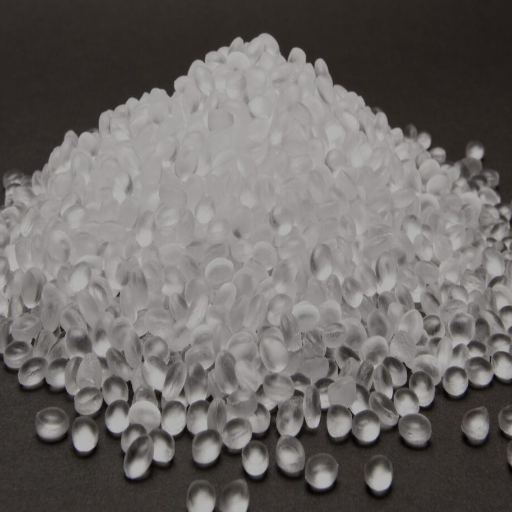
Benefits of Using Delrin Plastic
Exceptional Mechanical Strength: Delrin has impressive tensile strength and stiffness, so components that need to undergo mechanical stresses may well be made of Delrin. It has good load-bearing ability and will last a long time in demanding applications such as gears, bushings, and conveyor systems.
Superior Dimensional Stability: One of Delrin’s extreme properties is that it changes very little in dimension due to varying temperatures and humidity. Dimensional stability, therefore, ensures the integrity and reliability of highly critical components in the automotive and electronics manufacturing industries.
Excellent Wear and Friction Resistance: High-penetrating wear and friction resistance enable Delrin to be used in sliding applications, such as bearings and cams. This helps reduce maintenance and improve the lifespan of moving components.
Chemical and Moisture Resistance: The material is highly resistant to chemicals, oils, hydrocarbons, and moisture, making it most suited for areas where exposure to corrosive substances or damp conditions is unavoidable. This significantly expands application possibilities in industrial and marine contexts.
Lightweight and Machinable: Delrin, while very strong and durable, is also very lightweight, making it easy to handle and reducing the weight of the end products. It also exhibits excellent machinability, enabling part manufacturers to easily machine intricate designs and achieve fine tolerances for custom parts.
Thermal Resilience: Delrin works efficiently over a broad temperature range, as it retains its physical properties even when exposed to extreme cold or heat. This gives it the advantage of being used in applications where temperature fluctuations are a regular occurrence, such as in engine components and machinery housings.
Less Noise and Vibration: When used in mechanical systems, Delrin significantly reduces noise and vibration levels due to its damping properties. This is a plus for consumer products, while also significantly improving efficiency on the industrial side.
With these allied traits, Delrin meets modern engineering needs and is a cost-effective medium through which durable and superior performance parts can be fabricated across varied industries.
Limitations and Considerations
While Delrin presents an enticing array of advantages, some inherent limitations should be taken into consideration when determining the best usage. One of Delrin’s chief weaknesses is that it is harmed by prolonged exposure to UV light, resulting in degradation of mechanical properties, surface discoloration, and loss of surface finish ability. Strategies for protecting or modifying the material will need to be implemented for outdoor use. Another limitation is that Delrin is not substantially resistant to attack by strong acids, alkalis, or oxidizing agents; therefore, its use in aggressive chemical environments is not recommended.
Another consideration is the relatively high thermal expansion that tends to produce dimensional changes under fluctuations in temperature. This property must be compensated for on the engineering side if its primary purpose is for high-precision applications to meet demands and tolerances. Additionally, although relatively economical compared to metals, other plastics may be cheaper than Delrin, depending on scale factors and demand, which can impact the project budget.
By considering these limitations judiciously and planning their designs accordingly, manufacturers can ensure that they can harness all of Delrin’s benefits, with no compromise on safety, reliability, or cost-effectiveness in their applications.
Cost-Effectiveness of Delrin Compared to Other Materials
When considering Delrin’s cost-effectiveness, it is essential to account for its unique balance of properties compared to other materials, metals, and alternatives. Delrin offers high mechanical strength, dimensional stability, and low friction, minimizing the need for further working, coating, or lubrication in immediate applications. Conversely, Delrin serves as a far more economical solution compared to commonly used metals like aluminum or steel, given its lower material costs and simplified manufacturing due to its lightweight and ease of machining.
When weighing Delrin against other engineering plastics, it is generally perceived as having outstanding wear and chemical resistance that outweigh the initial cost during its lifetime of application. This wear resistance and performance under high loads or in the presence of severe chemical exposure tend to reduce maintenance costs and product lifecycle costs in many industries where it is employed. Additionally, for industries that emphasize production volumes, the short cycle time and moldability of Delrin are other factors contributing to cost savings.
Manufacturers will do well to consider the exact requirements of their application. For lower-stress applications or standard components, alternatives such as polypropylene or PVC may be just the thing to help drastically reduce expenses. Considering the study of material performance in the planning phase would enable industries to guide their Delrin use, along with budget considerations.
Future Trends in Delrin Usage
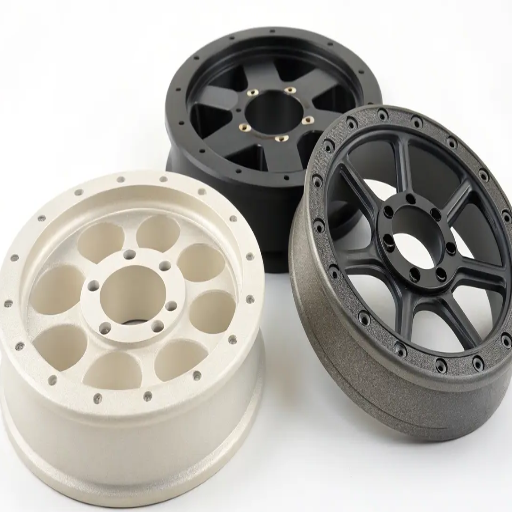
Innovations in Applications of Delrin
In my opinion, when innovations in Delrin applications are reviewed, the constant redefinition of this material to meet the demands of newer technologies and industries stands out. For example, in the automotive manufacturing industry, engineers are applying developments in Delrin to replace heavier metal components, allowing vehicles to be lighter and achieve better fuel efficiency. They’ve also enhanced their self-lubricating properties to allow quieter operation and efficiency without the need for extra lubrication in applications such as gears, bushings, and fasteners.
Apart from automotive applications, innovations in medical device development have also seen significant progress with Delrin. Therefore, thanks to its biocompatibility and resistance to sterilization methods, its use in surgical instruments, drug delivery systems, and diagnostic devices is increasing. In association with the miniaturization trend in medical technology, Delrin offers enough strength, precision, and durability to fabricate smaller yet fully functional components.
Additionally, the rise of robotics and innovative technologies would provide an ideal playground for Delrin applications. With materials best fit for robotics that emphasize lightness, efficiency, and high performance, Delrin has found a way to engineer gears, joints, and housings that can endure repetitive motion and maintain tolerances. These developments can indeed be viewed as the progress of Delrin, aligning with industry innovations that focus on efficiency, performance, and sustainability in various applications.
Environmental Considerations and Sustainability
When environmental impact and sustainability measures are under review, I believe materials such as Delrin may provide the best opportunity to balance performance with ecological consideration. Delrin is forged for durability and efficiency, allowing the reduction of waste by extending the life cycle of products. Its high strength and wear resistance mean that fewer replacements and repairs are needed, resulting in decreased resource consumption in the long run. Choosing highly durable materials, such as Delrin, is, therefore, a practical way for industries to minimize their environmental footprint without compromising functionality.
Sustainability does not end with the product’s life. It also applies to the methods used in its manufacture. Several efforts have been made to improve the manufacturing process of materials, such as Delrin, including reducing energy consumption and neutralizing waste generated during fabrication. Recycling processes have also been advancing to increase efficiency in reclaiming Delrin products, thereby continuing to establish a circular economy. To me, it is so encouraging that all these points are working together as a means to greater environmental consciousness while still supporting the performance needs of industry.
Ultimately, sustainability in material choices constitutes a multifaceted partnership that requires innovation and insight. From robotics to automotive to consumer goods, Delrin showcases these materials evolving to meet environmental challenges. By incorporating sustainable practices into its production and use, this multifaceted material is on track to a greener recovery.
Potential Market Growth of Acetal Plastic
Acetal plastic, also known as polyoxymethylene (POM), has a significant opportunity for market expansion due to its diverse applications and excellent durability, making it suitable for various industrial applications from end consumers. From my standpoint, the market growth potential for acetal plastic is continuously hindered by sustained demand from sectors such as automotive, electronics, and healthcare for cheaper yet more competitive materials. Owing to its excellent mechanical properties, such as low friction, high tensile strength, and resistance to wear, more and more sectors are preferring acetal plastic over metal components. This is helping to reduce manufacturing costs and, therefore, pushing the industry towards lighter and more energy-efficient designs.
From my perspective, sustainability also has a key role in shaping the market for acetal plastics. With environmental consciousness being brought to the fore, recycling of POM and production of alternatives with very low carbon footprints should further boost their potential, alongside the increase in adoption of industrial automation and robotics that generates a colossal demand for tough precision-engineered components, in which areas, acetal plastics perform exceptionally well.
Summarizing what was said above, acetal plastic is thus presented as a material with a promising future due to its favorable properties, flexibility, and the global push toward efficiency and sustainability. By addressing the challenges of emerging markets, driving continuous innovation, and prioritizing sustainability, I anticipate that acetal plastics will continue to prosper and remain relevant in several industries.
Reference Sources
-
Delrin Plastic Material Properties Explained
Highlights Delrin’s superior density, low moisture absorption, and chemical resistance. -
Delrin Material Properties, Applications, and More
Explains Delrin’s low friction, consistent performance, and key industrial applications. -
Delrin® Outperforms – Delrin
Details: Delrin’s low friction and high wear resistance make it an ideal replacement for metal parts. -
Acetal vs. Delrin®: Their Differences
Discusses Delrin’s toughness, high strength, and ease of molding for engineering uses. -
What is Delrin (POM-H)? Its Composition, Applications, and More
Covers Delrin’s composition, industrial applications, and its use in machinery and consumer products. - Top Plastic Pellets Suppliers in China
Frequently Asked Questions (FAQs)
What is Delrin® and its application in plastic components?
Delrin® is a registered trademark for technical versions of an acetal homopolymer resin, highly prized for its performance characteristics. Due to its excellent mechanical characteristics and wear resistance, this thermoplastic is widely utilized in plastics manufacturing. It is selected for applications that require metal substitution, necessitating utmost strength and stiffness. The combination of mechanical properties and dimensional stability enables Delrin to be utilized in precision parts, such as gears, bearings, and fasteners. The fact that it can perform well over a wide range of temperatures makes it highly versatile for both consumer products and industrial applications.
What are the mechanical properties of Delrin plastic?
Delrin offers an array of attractive mechanical features, including high tensile strength and resistance to creep. Such features have made it a prime player for engineering applications where reliability is essential. The uniform crystalline structure of Delrin provides it with enhanced life and resistance to wear, allowing it to be efficiently incorporated into components subjected to frequent movement or stress. In addition, the high stiffness of Delrin facilitates the fabrication of highly sturdy parts, which, in certain applications, can be used interchangeably with metals. CNC machining procedural aspects further offer a wide variety of custom components.
How do the physical properties of Delrin compare to other plastics?
In comparison to other thermoplastics, Delrin exhibits superior dimensional stability and mechanical strength. The fact that Delrin operates within an extensive range of temperatures without distortion or loss of performance is a notable advantage over some other plastics. Its durability in low-temperature conditions, as well as the ability to maintain rigidity under such conditions, offers it a preferred status for parts that must deliver reliability under various working conditions. In the engineering and manufacturing sectors, Delrin homopolymer is regarded as having better performance in more demanding applications than acetal, which comes in the form of copolymers or other varieties. Hence, Delrin is widely favored in these two sectors.
What are the pros and cons of Delrin?
Delrin offers certain benefits that make it an ideal choice for engineers and manufacturers. With high strength, stiffness, and durability, Delrin can serve as a reliable substitute for metal components. It also resists wear and creep, thereby extending its service life and reducing the need for frequent application changes. However, the drawbacks include its ability to deteriorate over time under the effects of UV light and certain chemicals. Hence, while this is a suitable choice for several applications, proper selection is recommended to ensure that it meets the project’s specific requirements.
Can Delrin be used in automotive applications?
Yes, Delrin is being used extensively in automotive applications, given that it can meet the stringent criteria of high-standard mechanical performance. Applications include use in parts such as gears, bearing housings, and various fasteners, where durability and reliability are at the forefront of requirements. The thermal resistance of Delrin enables it to be used in a wide range of automotive environments. The low weight of Delrin is an added advantage in improving the efficiency of an automobile, thereby making it an ideal material choice. The uniform crystalline structure of Delrin further ensures that the valuable life and performance of components will resist continuous wear and tear.
What role does Delrin play in CNC machining?
Delrin plays a crucial role in CNC machining as a preferred material in making precision components due to its excellent dimensional stability and machinability. The ability to produce plastic parts with a high level of accuracy makes Delrin a superb candidate for custom applications. Delrin’s stiffness ensures that complex geometries can be created without compromising the structural integrity. Concurrently, Delrin finishes smoothly on machined parts, thus reducing friction when in use, such as in gears and bearings. This practical application capability makes Delrin an important CNC machining material.

